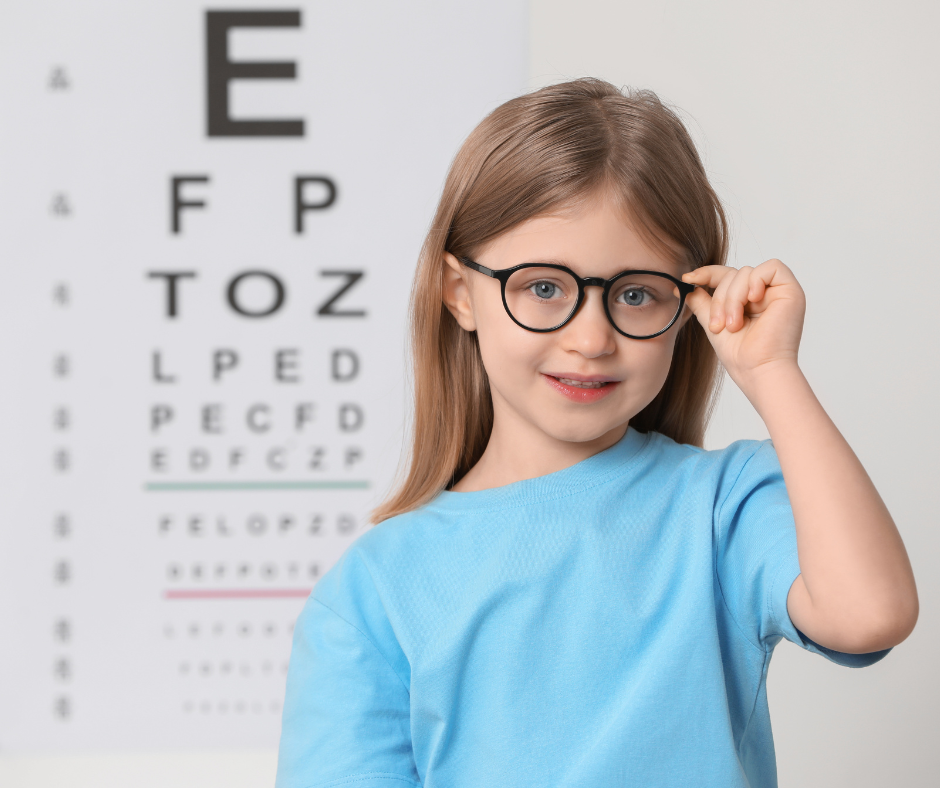
05 Aug Pediatric Myopia Explosion: What Toronto Parents Need to Know
Pediatric myopia refers to nearsightedness in children and adolescents, causing difficulty in seeing distant objects. It usually develops in school-aged children and increases with age. Myopic kids might require glasses or contacts for vision.
Myopia continues to increase globally, with screen time and reduced outdoor activity. In the following sections, discover how pediatric myopia is detected and how to keep it under control.
What Is Pediatric Myopia?
Pediatric myopia, or nearsightedness, is a common visual condition that begins in childhood, typically between the ages of 6 and 14. This means that near things appear clear, but distant objects appear blurry. Myopia occurs when the eyeball grows too long in an anterior-posterior direction, causing light to be focused in front, rather than on the retina.
Almost every child in the world goes through it – 5% of preschoolers, 9% school children, and 30% of teenagers. Its rates can differ—Asian children have higher rates than other kids. Pediatric myopia doesn’t just cause blurry distance vision; it can progressively worsen and cause serious eye complications if not controlled early.
Signs Your Child Can’t See Clearly
-
The Growing Eye
Children’s eyes grow over time, and excess growth can lead to myopia. Genetics and environment both play a role. Regular eye exams help detect early changes, allowing for treatment like special glasses or outdoor time to slow progression.
-
The Blurry Vision
Pediatric myopia causes blurry distance vision, making it hard to see the board or play sports. Watch for signs like squinting, sitting too close to screens, or complaints about vision. Early exams are key.
-
The Progression Risk
Untreated myopia can lead to high myopia and serious complications like retinal detachment or glaucoma. Myopia worsens with age—especially in childhood—so early intervention is critical.
-
Long-Term Impact
Myopia often starts earlier and progresses faster in kids than in adults. Early onset increases long-term risk. Knowing your family history and acting early can protect your future vision.
Why Is Myopia Increasing?
Myopia, or nearsightedness, is rising rapidly among children worldwide. It’s driven by a mix of genetics, modern lifestyles, and increased near work — all shaping each child’s individual risk.
Genetic Links
Kids are more likely to develop myopia if one or both parents are nearsighted, especially if both are. A refraction of -1.25 diopters or worse at a young age signals faster progression. While genetics plays a strong role, the rise in global cases suggests the environment matters too. Knowing family history helps doctors monitor high-risk children, and genetic counselling may benefit some families.
Environmental Shifts
Urban lifestyles mean more indoor time, screen use, and less outdoor play—factors linked to higher myopia rates. Cities like Singapore show faster progression compared to more outdoor-based cultures. Encouraging kids to play outside daily can help protect their vision.
Near Work Impact
Extended reading, homework, or screen use, strains young eyes and speeds up myopia, especially in early childhood, which can cause eye focusing problems. Following the 20-20-20 rule and limiting screen time can reduce strain and support healthier visual development.
Recognizing Myopia In Children
Myopia often begins between the ages of 6 and 14, but early signs can be subtle. Catching it early helps slow progression and reduce long-term impact.
Regular eye exams — starting as early as 6 to 12 months — are key. Watch for these common signs:
- Squinting or frequent eye rubbing
- Holding screens or books very close
- Headaches or eye fatigue
- Trouble seeing distant objects (e.g., classroom board)
- Sitting very close to TVs or monitors
- Avoiding activities that rely on distance vision
Early detection means earlier support — helping protect your child’s sight for the future.
Parents’ Role In Eye Health
Myopia (nearsightedness) is becoming increasingly common in children worldwide. It allows clear up-close vision but blurs distant objects, and if unmanaged, it can lead to more serious eye issues over time.
As a parent, your awareness matters. Watch for signs like squinting, headaches, or difficulty seeing faraway objects. Even if kids don’t complain, routine eye exams — ideally starting before school age — are vital. Children with risk factors, such as a parent with high myopia or early signs of rapid eye growth, may need more frequent visits.
Kids’ eyes grow quickly between the ages of 6 and 12. Understanding your child’s risk helps guide care and monitoring.
Encouraging outdoor time (at least 1–2 hours a day) supports healthy eye development. Sunlight and distance viewing help reduce myopia risk. While reading and screen time aren’t the main culprits, ensure good lighting and regular eye breaks during near work.
Today’s treatments offer real help. Low-dose atropine drops, and specially designed lenses can slow myopia progression safely and effectively. Combined with regular care and early detection, these tools help preserve your child’s vision for the future.
Conclusion
Children’s vision can change quickly, and myopia is appearing earlier than ever. The signs—like squinting or sitting too close to screens—can be easy to miss. Early action makes a big difference. Simple habits like regular screen breaks, daily outdoor time, and routine eye exams help protect growing eyes. Clear vision boosts confidence in school, sports, and everyday life. Stay proactive—book an eye exam today and consult your optometrist for personalized advice. Small steps now mean healthier eyes for years to come.
Don’t wait until symptoms get worse — early detection is key in managing pediatric myopia. Book a comprehensive eye exam with Dr. D’Orio Eyecare today. Visit drdorioeyecare.com/book-appointment or call us at 416-656-2020 (Toronto) or 416-661-5555 (North York). Let’s protect your child’s vision.


